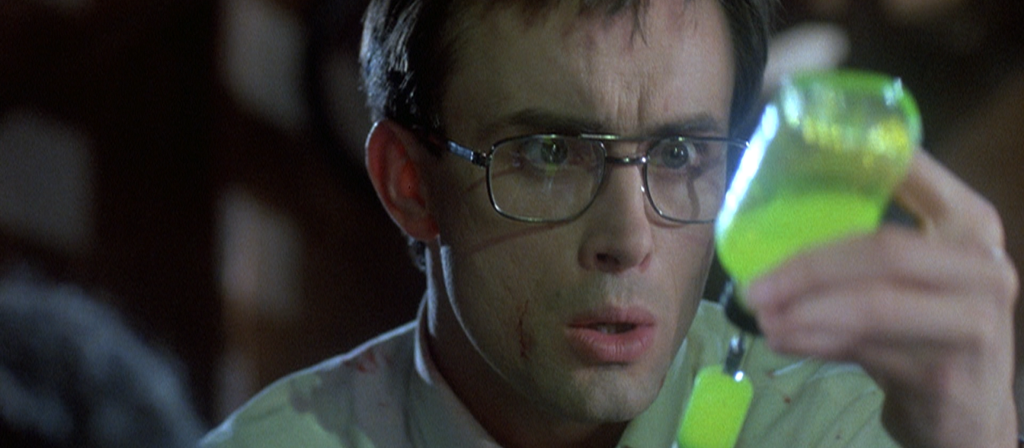
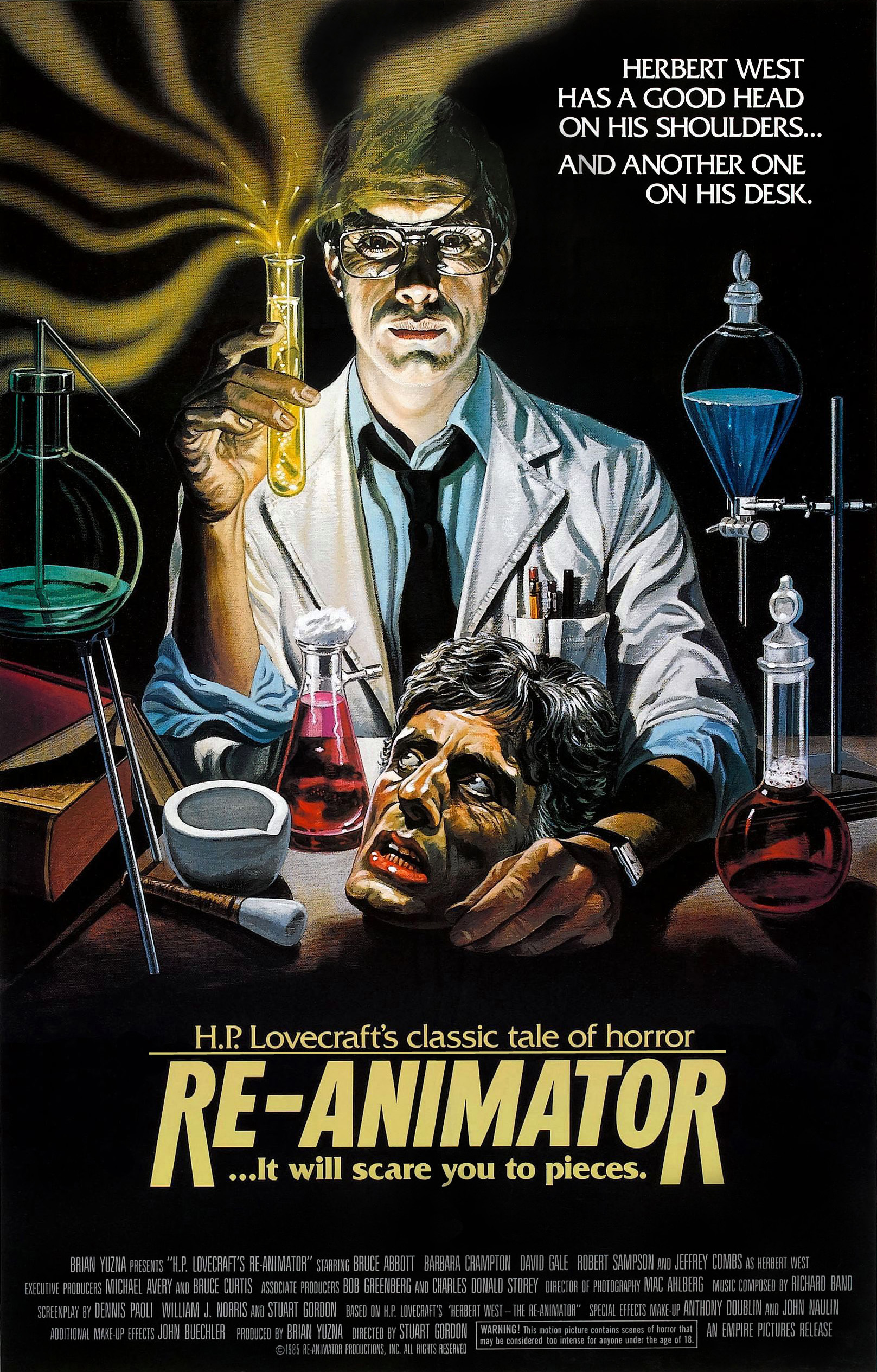
“You steal the secret of life and death, and here you are trysting with a bubble-headed coed. You’re not even a second-rate scientist!”
I’ve been watching a lot of horror-comedies lately, which means that I’ve been watching a lot of bad movies. The genre’s general lack of quality stems from a variety of root causes, but prominent among them is an unwillingness to embrace the schlocky aesthetic that comes with the territory when trying to balance the horrific and the humorous. Or, on the other end of the spectrum, when it is embraced, the subtle competencies that give a film its flow and texture are absent. Either way you’re left with “bad” films that are actually bad, with only a few “so bad they’re good” examples for good measure. There is fun to be found in such efforts, for sure, but it’s much more enjoyable when you come across those transcendent gems that choose a disreputable genre to work in and then bring adequate passion and skill to the project. Like I said though, that doesn’t happen often because most capable filmmakers are not interested in kitsch, body horror, exploitation, &c. The successful formula for such works usually involves auteur filmmakers early in their careers (think Sam Raimi and Evil Dead II, Peter Jackson and Dead Alive, or Edgar Wright and Shaun of the Dead). Stuart Gordon’s first feature, the H.P. Lovecraft inspired Re-Animator, is one such diamond in the rough. It’s overflowing with gore (be ready for exploding eyeballs in the opening scene) and tropes of mad scientists and the undead, but while it has a deadpan sense of humor, it does not mock its genre. Instead, uplifted by Gordon’s spirited direction, we’re presented with a bloody romp that is seriously made but tonally playful. It’s one of those debuts that’s bursting at the seams with a vigor that reveals an eagerness to swing for the fences. Sometimes such audacity doesn’t end well, but Re-Animator certainly works, especially if you have a stomach for viscera and amputation.
The central plot device of the movie is a serum that brings the recently-dead back to life. Developed by a mad genius named Herbert West (Jeffrey Combs) at a university in Switzerland, the syringe of neon green goo is first shown resurrecting Herbert’s professor. But the dose is too large, and through the utilization of those glorious 1980s practical effects the old doctor’s eyes begin to squirt blood all over the laboratory before his second demise. After the incident, West finds his way back to America where he continues his studies at Miskatonic University, befriending fellow medical student Dan Cain (Bruce Abbot) and finding a nemesis in Dr. Carl Hill (David Gale), whom West claims stole many of his ideas from West’s former professor.
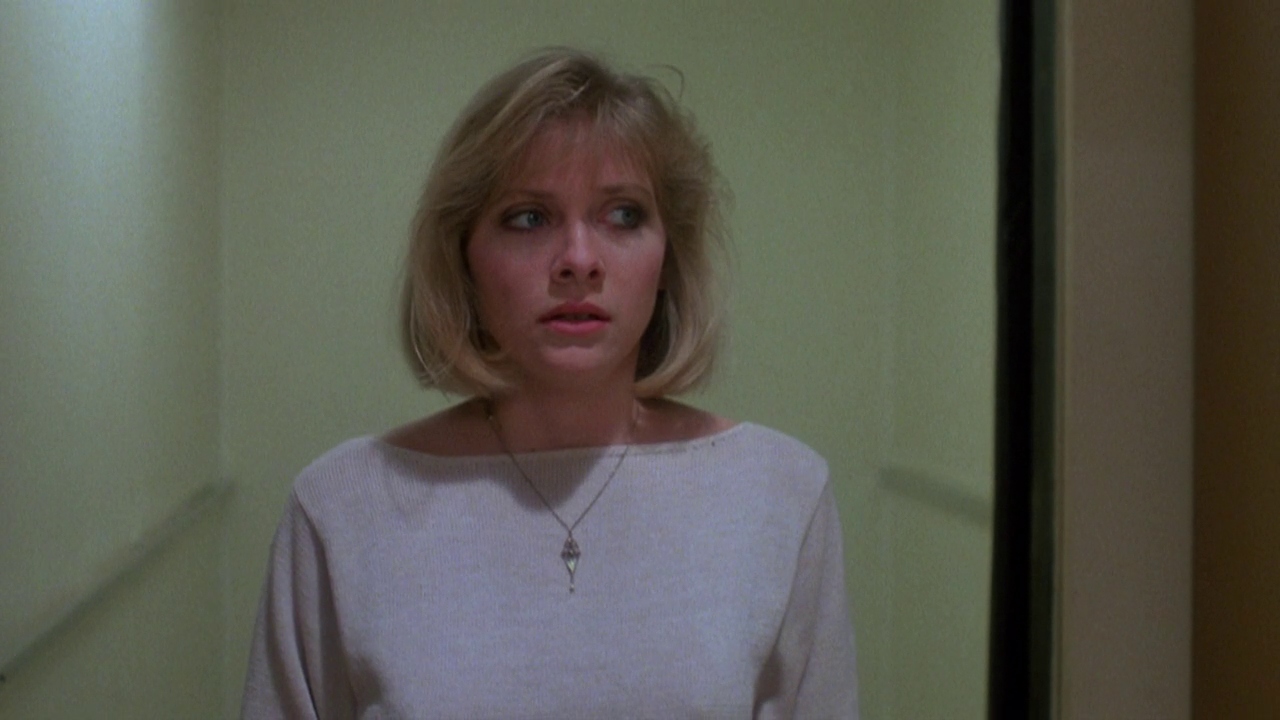
West finds lodgings in Mr. Cain’s spare room and requests the basement to himself. His request is granted, but his sub rosa experiments are soon discovered when he reanimates his gracious host’s dead cat (which he may or may not have killed himself) and it turns feral and attacks him. An effectively lit sequence has Cain and West stalking around the basement looking for the revitalized feline as the hanging lamp swings wildly—it’s hard to conceive of a house cat evoking a sense of fear, but with some creative effects they make it just convincing enough that I couldn’t help but smile. Although initially suspicious of West’s claims that he can bring the dead to life, Cain comes around when his beloved Rufus is reanimated for a second time, although by now he has a broken spine and his entrails are spilling out so all he can do is shriek and twitch. Complicating matters is Megan (Barbara Crampton), Dan’s girlfriend and daughter of the medical school’s dean, who walks in on the boys while the animated remains of Rufus squirm and squeal on the basement table.
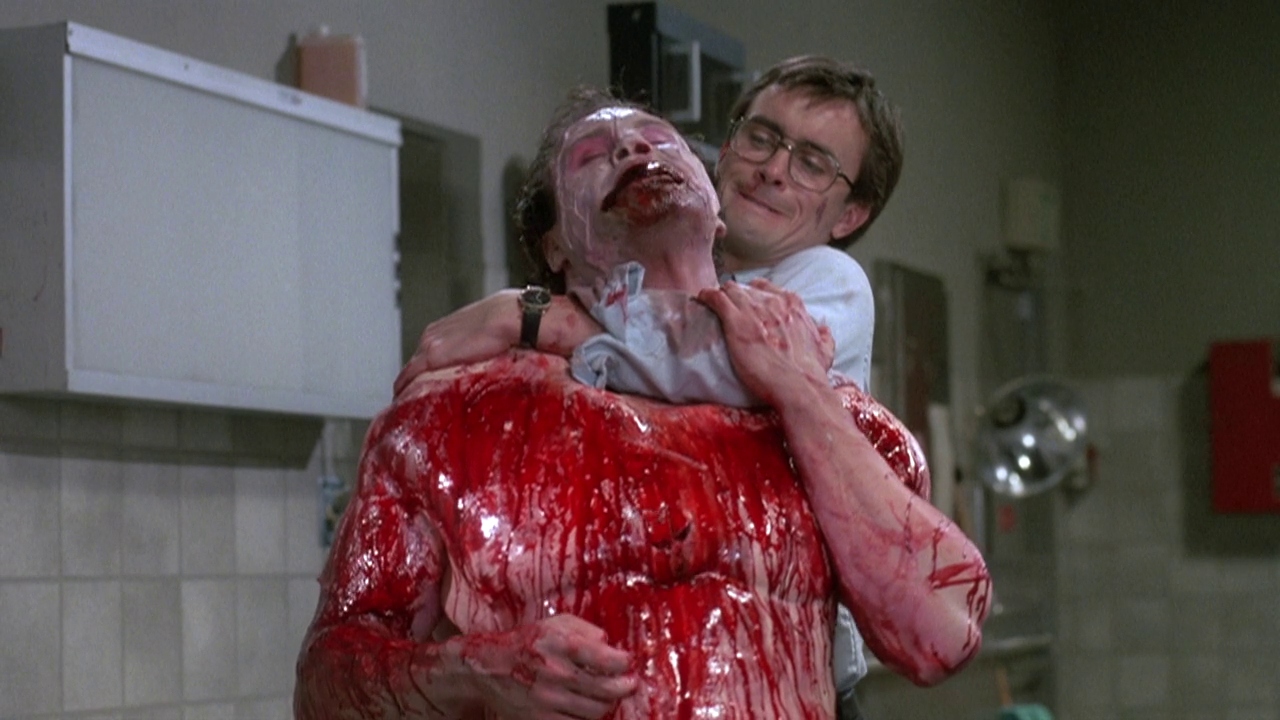
The duo are expelled from the school when their activities are discovered, but they continue to take what opportunities present themselves and remain on their toes in order to keep their tracks plausibly covered. We soon find ourselves in the morgue, a regular place for Dan Cain to be before his expulsion, but Herbert West must be snuck in on a gurney and passed off as a corpse. Once inside, they set about finding a freshly dead test subject. After injecting him with the reagent, the corpse comes back to life in a hideous, frenetic state—purple skin, pulsating veins, building muscles, bleeding mouth—and begins attacking his resurrectors. Dr. Halsey (Robert Sampson), furious that the two expelled students were allowed back into the hospital, approaches the morgue to give them a piece of his mind, only to find himself a victim of the berserk zombie. The experiment gone awry is only brought to an end when Herbert calmly locates a bone saw and buzzes through the maniacal zombie’s heart.
Where many promising horror-comedies fail is that after a promising beginning such as the one described above, they relax into convention. But Re-Animator emphatically refuses, using its initial two acts as a springboard into insanity and excess in its third. When Dr. Hill tries to blackmail West in order to have his own name associated with West’s miracle serum, West promptly decides that the only possible course of action is to decapitate the doctor. But then, what better test subject than a victim that died only a moment ago? And so the disembodied head of Dr. Hill—possibly the film’s most iconic image—comes back to life. (As an example of the film’s dry humor, about an hour previous to this a Talking Heads poster can be spotted in Dan’s house.) But his body comes back to life too, and this gets West into trouble. Returning to his office carrying his own head (or carried by his own body—the metaphysics of where the soul resides or if it even returns upon reanimation are not the subject of Re-Animator) and West’s serum and notes, Dr. Hill acts on a perversion only hinted at throughout the earlier portions of the film. Since the science is already so loosely defined, we can take Hill’s newfound ability to telepathically control other re-animated bodies in stride, and so when the revitalized Dr. Halsey carries his daughter to Dr. Hill’s lab, it seems only “logical.” And then the film’s most titillating gross-out moment occurs, in which the nasty Dr. Hill, holding his own detached head, advances toward the unconscious, naked body of Megan Halsey. From there it’s a glut of body horror, gruesome practical effects, blood squibs, make-up, the whole nine yards. At one point, the spilled entrails of a zombie reach out and lasso Herbert West. It’s a blast. And though there are lots of usually-concealed body parts on screen, it is actually clever in how much nudity is implied rather than depicted, making you think you’ve seen more than you have.
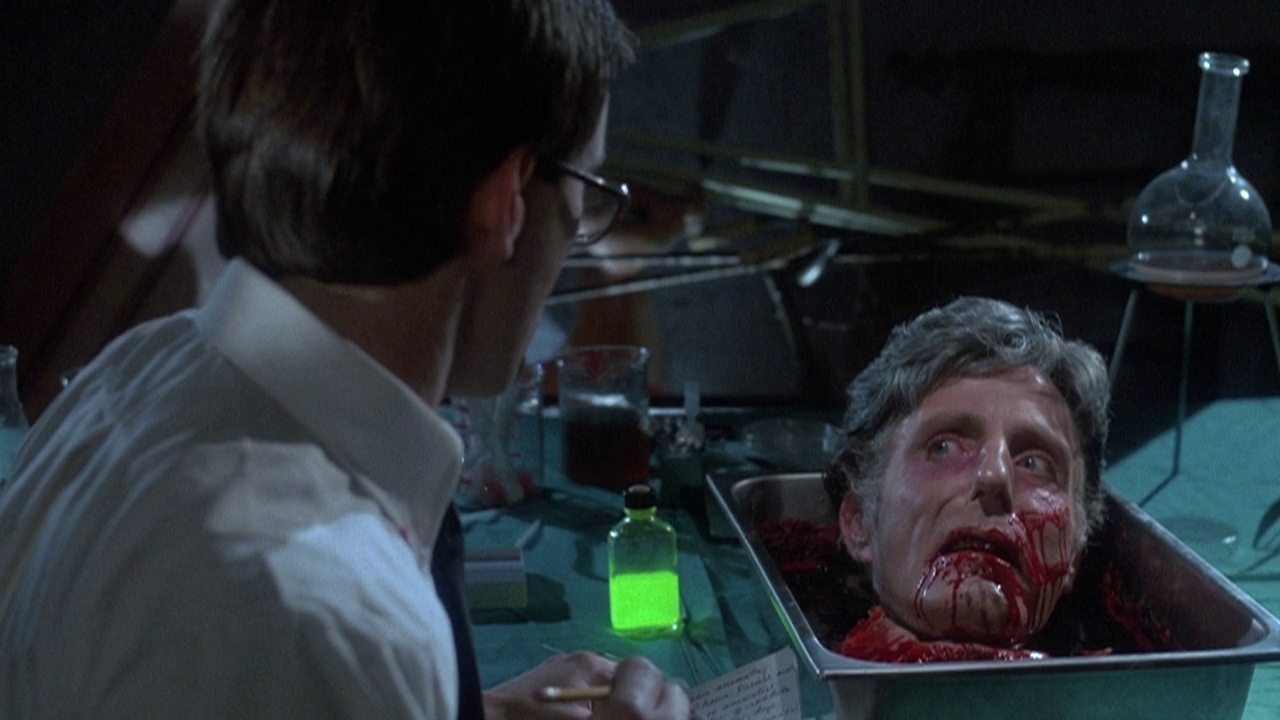
Re-Animator is grisly, pulpy, and full of blood-soaked carnage, but its showers of fluid and viscera are balanced by quirky humor and kinky sexuality. It’s also just flat out entertaining. There’s a certain amount of cleverness that’s evident in how Dennis Paoli’s screenplay and Gordon’s direction walk on a tightrope between legitimate filmmaking—character development, motivation, plotting, conflict—and schlocky indulgences of stylistic excess. The entire team seems conscious of the unusual juxtaposition of good filmmaking and bad taste, but not self-conscious enough to ruin the fun by coming off as pretentious. At the center of the film’s success is Jeffrey Combs, whose cocksure, self-righteous zealotry as Herbert West defines the dry humor of the film and updated the blueprint for the mad scientist type. Famously enjoyed by several notable critics who would usually scoff at something this low-brow, Re-Animator was a hit because it was made by someone who desired to make it in a certain way, and its palatability with viewers was only of secondary concern.
Sources:
Morgart, James. “Things No One Likes to Talk About: An Interview with Stuart Gordon”. Cineaste. 2009.